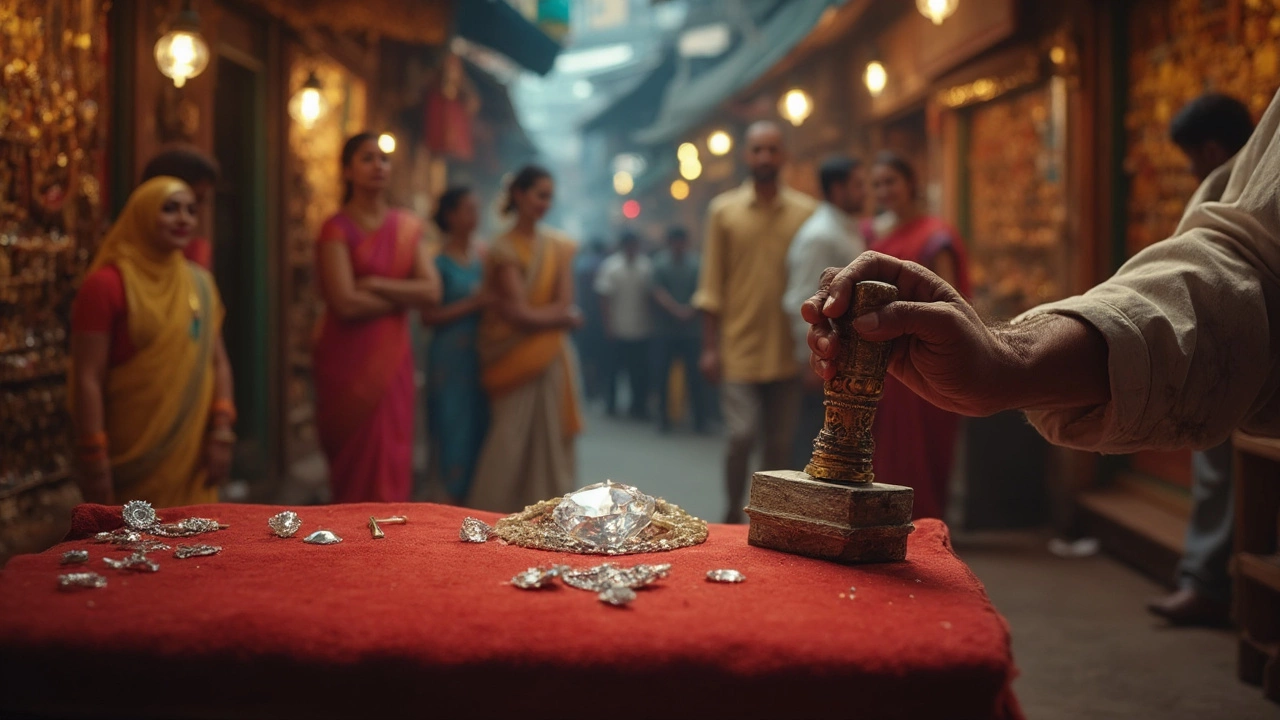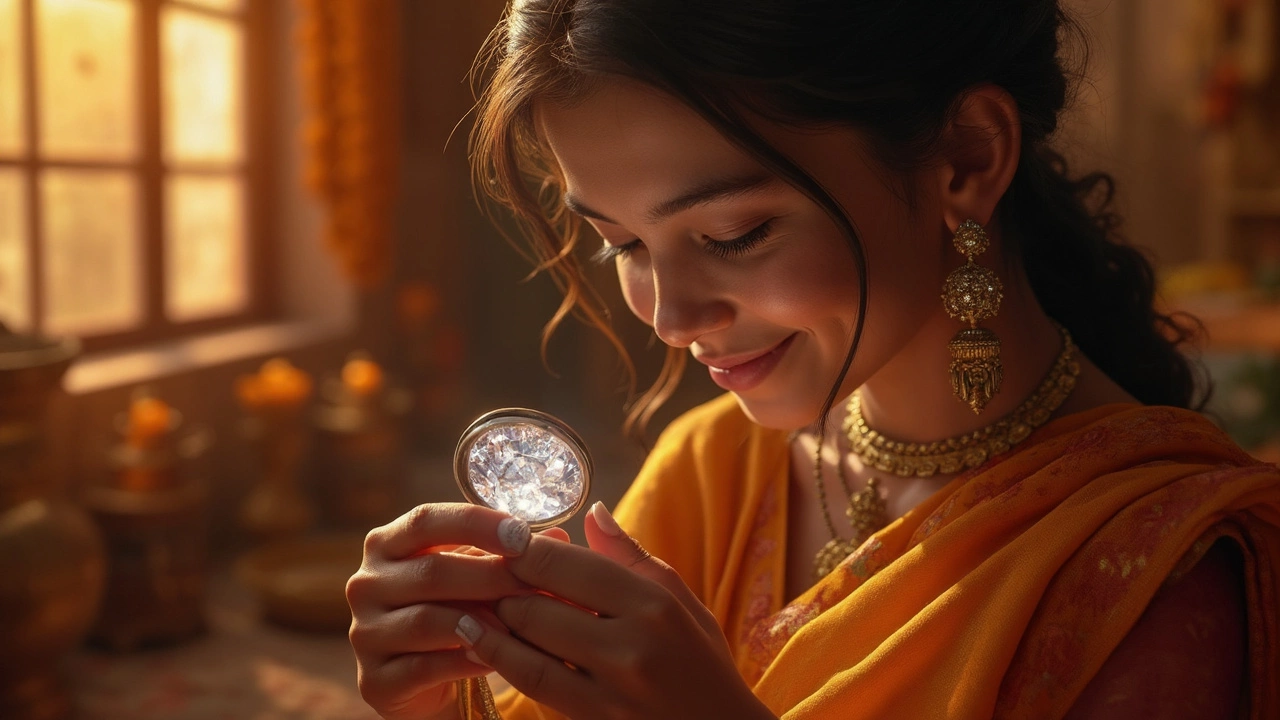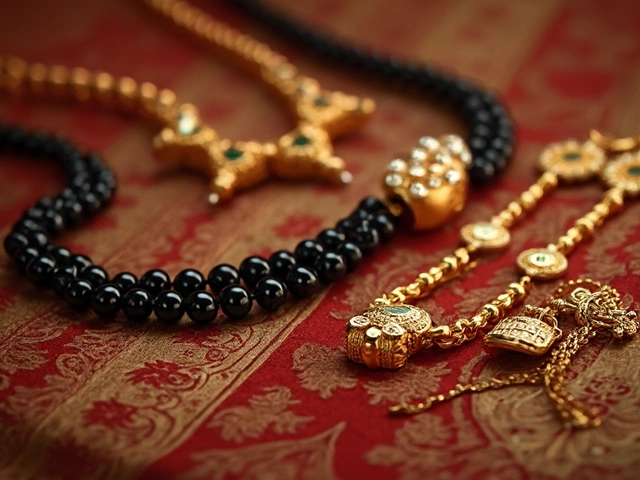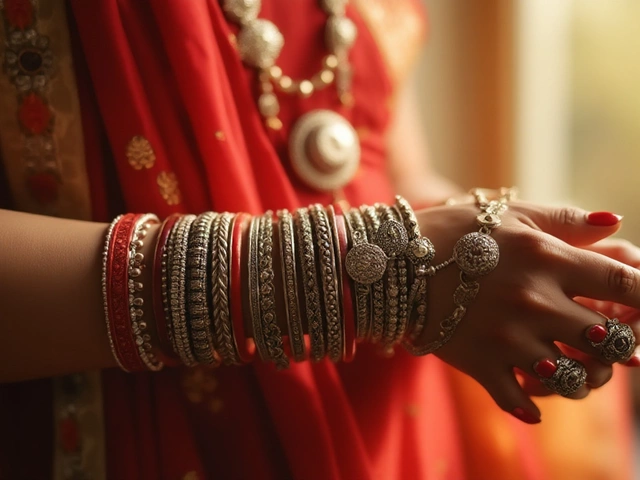Diamonds are famous for being the hardest natural material on Earth. You hear 'diamond' and think 'indestructible,' right? But what if someone grabbed a hammer and swung it straight at a diamond? Would it survive, or crumble to dust? This isn't just some wild experiment—it's a situation jewelry owners might actually worry about, especially if you just got a sparkling diamond ring for a special occasion.
Here's the shocker: diamonds can break. Yes, even though they're insanely hard, one good whack in the wrong spot and snap! Suddenly, that beautiful stone can split right down the middle. This little-known weakness comes down to the way diamonds are formed. Hard as they are, their atomic structure creates natural lines—called 'cleavage planes'—where they're more likely to crack if hit just right.
- How Strong Are Diamonds, Really?
- What Happens When You Hit One With a Hammer?
- The Risks for Diamond Jewelry Owners
- Smart Ways to Protect Your Diamond Rings
How Strong Are Diamonds, Really?
Everyone calls diamonds the toughest thing in nature, and there’s some real science behind that. On the Mohs scale of mineral hardness, which goes from 1 (super soft) to 10 (super hard), diamonds top out with a perfect 10. No natural material scratches a diamond—tiny grains of sand, steel, glass, nothing comes close.
But here’s where things get interesting: hardness is not the same as toughness. Hardness just means it resists scratches. Toughness tells you how well it’ll resist chipping or breaking. When it comes to toughness, diamonds actually aren’t champs. They can break or chip if you drop them the wrong way or hit them right on a sharp edge. That’s why gem cutters rely on these weak spots to cut and shape them without turning them to powder.
Check this out—some real numbers:
| Property | Diamond | Emerald | Quartz |
|---|---|---|---|
| Hardness (Mohs Scale) | 10 | 7.5–8 | 7 |
| Toughness | Fair–Good | Poor | Good |
| Common Uses | Jewelry, cutting tools | Jewelry | Watches, countertops |
So as you can see, a diamond scores higher than other gems in hardness, but its toughness isn’t off the charts. This is why even a simple drop can chip your diamond ring if it lands just right. The key thing to remember is that diamond is king when it comes to resisting scratches, not breaking or shattering.
What Happens When You Hit One With a Hammer?
Most people assume a diamond is impossible to break. Here’s the deal: if you grab a regular diamond ring and whack it with a hammer, the diamond will probably break or even shatter. Diamonds are unbelievably hard—but not unbreakable. In fact, the way diamonds break is kind of unique compared to other stones.
Diamonds have something called 'cleavage planes,' which are invisible lines running through the stone. Hit a diamond along one of these lines with enough force, and the whole thing can split. That’s actually how gem cutters cut big diamonds into smaller, flawless pieces. They use a sharp tool, get it right on one of those planes, and a tap splits the diamond cleanly.
Here’s some simple proof: laboratory tests have shown that a direct, hard hit with a hammer (especially on a sharp edge or corner) can crush or snap a diamond. But if you try scratching or grinding it instead, you’ll have a pretty useless hammer—the diamond will win every time. The key difference is that hardness is about resistance to scratching, while toughness is about withstanding impact. Diamonds score a 10 on the Mohs Hardness Scale, the highest there is, but their toughness is actually only moderate compared to things like jade or sapphire.
| Gemstone | Mohs Hardness | Toughness Rating |
|---|---|---|
| Diamond | 10 | Good to Fair |
| Jade | 6-7 | Excellent |
| Sapphire | 9 | Excellent |
I’ve heard stories from jewelers here in India where someone dropped a diamond ring on tile or hit it while fixing something at home. The result? Tiny chips, cracks, or in rare cases, a diamond split in half. So, even though your diamond can handle day-to-day wear, it won’t stand up to the full brunt of a hammer.
- Don’t test your diamond’s strength yourself—leave the hammers to the pros.
- Be extra careful if your diamond ring has pointed edges, like in a princess or marquise cut. These spots are the easiest to break if hit right.
- If you ever drop your ring or bang it hard, check for any small cracks or chips, especially near the edges.

The Risks for Diamond Jewelry Owners
Owning a diamond ring is awesome, but it also means you've got to be a bit careful, especially in daily life. Even though a diamond is super hard, its toughness is another story. Hardness is about resisting scratches, but toughness is about resisting cracks and breaks—and diamonds actually rank low when it comes to toughness.
Imagine you’re knocking your ring against kitchen counters, floors, or door handles. These little accidents might not cost you the whole diamond, but a sharp hit in just the wrong place could cause a fracture. It’s not common, but it’s not unheard of. In fact, professional jewelers see broken diamonds more often than most people think—usually from people dropping their rings or bumping them against something hard.
Some famous accidents have made headlines. In one real-world case in India, a jeweler found a customer’s ring cracked after the ring was slammed in a metal gate. Even setting a diamond into a ring can cause problems if not done right; roughly 3-5% of diamonds get chipped during mounting, especially on corners or edges.
Here’s a quick look at how different risks stack up:
| Cause | Risk Level | Chance of Damage |
|---|---|---|
| Heavy Impact (hammer, door slam, drop) | High | Moderate |
| Everyday Wear (knocks, bumps) | Medium | Low |
| Professional Mounting | Medium | 3-5% (if corners exposed) |
| Storage with Other Jewelry | Low | Low, but may cause scratches |
So, if you own a diamond ring, don’t stress, but don’t take the stone’s strength for granted, either. Most chips and cracks can’t be fixed, and replacing a diamond can get expensive. The key is to pay attention to where and how you wear your ring, and consider a setting that protects the stone’s edges, like a bezel or halo.
Smart Ways to Protect Your Diamond Rings
If you want your diamond rings to last generations, a little everyday care makes all the difference. Diamonds might be the hardest known substance, but that doesn't mean they're invincible. A sharp hit, especially along the hidden weak lines, can break or chip your precious stone. Here’s what you need to keep those rings safe.
- Don’t wear them during heavy chores: Cleaning the house, gardening, or lifting weights puts your ring in harm’s way. The risk of slamming your diamond against something hard shoots up—so slide it off and keep it in a safe spot first.
- Store rings separately: Diamonds can scratch pretty much anything, including other diamonds. Use individual soft fabric pouches, or a box with separate slots. That way, your stones don’t bang together.
- Get the settings checked every year: Prongs can loosen over time, and a loose setting turns your diamond at risk for falls and knocks. Ask your jeweller for a once-over during your annual cleaning—they’ll spot trouble early.
- Insure your diamond jewelry: Accidents happen, even if you’re super careful. Jewelry insurance in India is more accessible and affordable than you’d think. It protects you from loss, theft, or damage, so you’re not left footing the bill for repairs or replacement.
- Clean carefully: Harsh chemicals and ultrasonic cleaners can stress the stone or loosen settings. Stick to a mild dish soap and a soft brush for a safe clean at home.
For some quick reference, here’s a look at how common diamond accidents play out, so you know what to avoid:
| Activity | Risk of Diamond Damage | Expert Tip |
|---|---|---|
| Wearing at Gym | High (impact with equipment) | Remove ring before exercising |
| Doing Dishes | Medium (hard surfaces, soap scum) | Place ring in a safe container |
| Storing with Other Jewels | High (scratching other stones) | Use individual pouches/slots |
| Annual Professional Check | Low (detects early issues) | Make this a yearly habit |
Treat your diamond rings with a little respect and care, and you’ll get to enjoy them without stressing about every little bump or knock.



